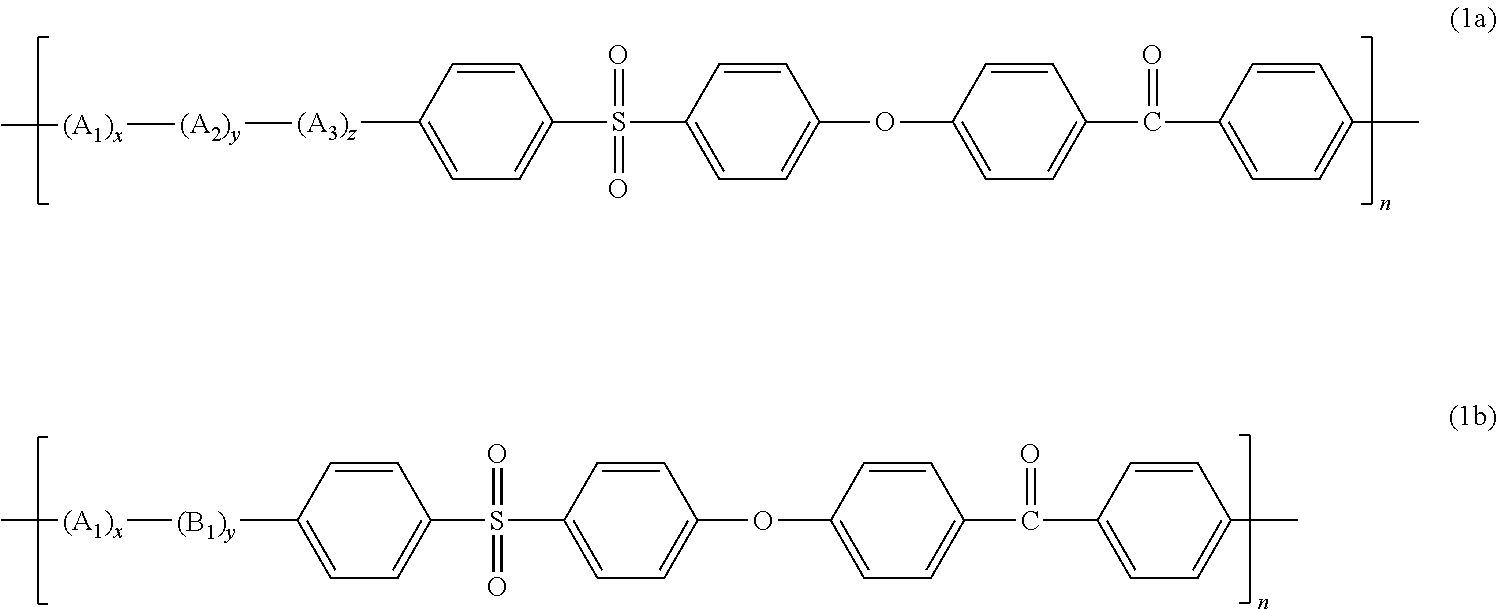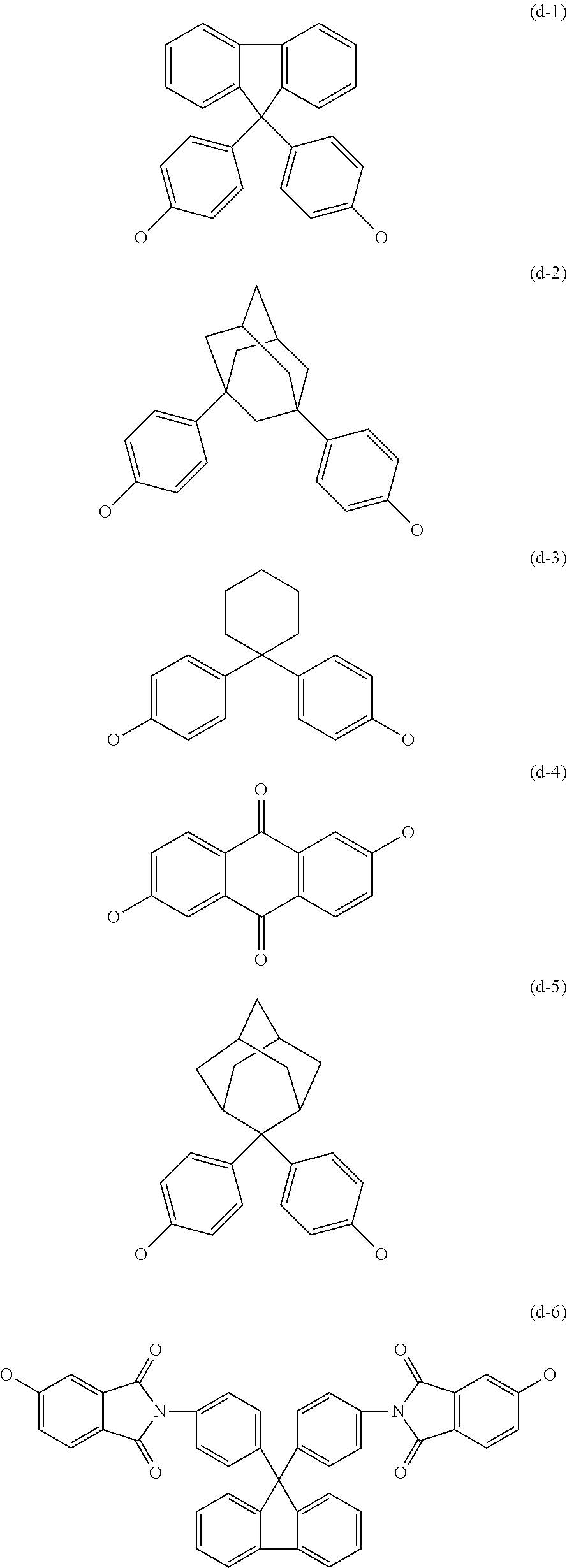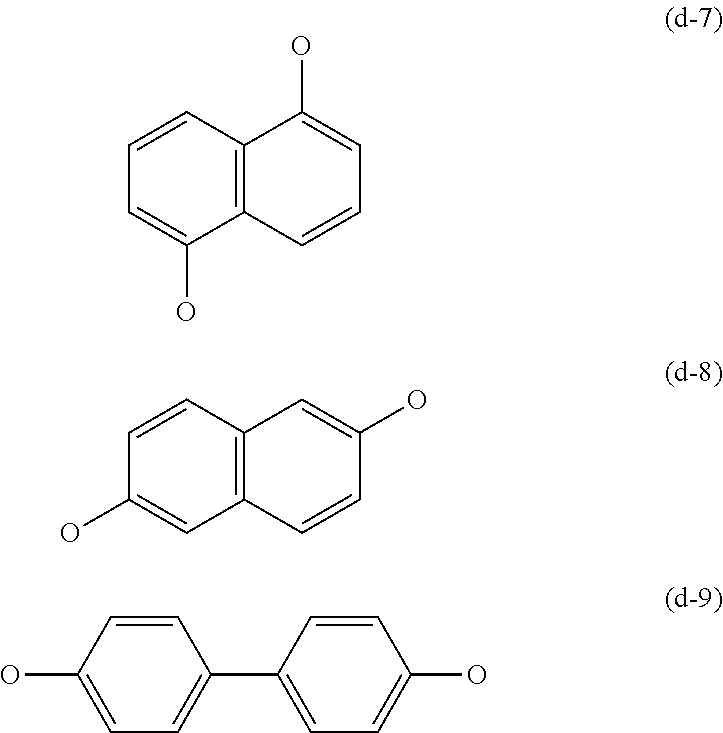Transparent Polyarylene Ether Polymer With High Heat Resistance And Method For Preparing The Same
a polyarylene ether and high heat resistance technology, applied in the field of polyarylene ether polymer, can solve the problems of difficult preparation of transparent films for flexible substrate materials, and achieve the effects of superior heat resistance and mechanical properties, high glass transition temperature, and superior film formability
- Summary
- Abstract
- Description
- Claims
- Application Information
AI Technical Summary
Benefits of technology
Problems solved by technology
Method used
Image
Examples
example 1
Synthesis of Diol Monomer (BPF)
[0051]BPF was synthesized as an aromatic diol monomer. 9H-Fluorene-9-one (3 g, 16.7 mmol), phenol (3.03 mL, 34.48 mmol) and methylene chloride (MC, 8 mL) were added to a 25-mL 3-bulb flask. After stirring well and adding 3-mercaptopropanoic acid (0.013 mL, 0.15 mmol) and methanesulfonic acid (1.2 mL, 18.6 mmol), the resulting solution was further stirred at 48° C. for 30 minutes. Subsequently, after stirring at 40° C. for 12 hours, the solution was cooled at room temperature for an hour and then filtered. The filtrate was washed with a small amount of MC and water to obtain BPF. The resulting solid was recrystallized with MC to obtain pure BPF (yield: 75%) of the following structure. Melting temperature was 225° C.
[0052]1H-NMR (CDCl3; ppm): g, 7.75 (d, 2H); d, e, f, 7.35 (m, 6H); c, 7.07 (d, 4H); b, 6.65 (d, 4H); a, 4.63 (s, 2H).
example 2
Synthesis of Diol Monomer (1,3-BPA)
[0053]1,3-Bis(4-hydroxyphenyl)adamantane (1,3-BPA) was synthesized as an aromatic diol monomer. First, 1,3-dibromoadamantane (1.876 g, 6.38 mmol) and phenol (28.1 mL, 0.32 mol) was added to a 50 mL 3-bulb flask, slowly heated to 185° C. under nitrogen atmosphere and stirred for 5 hours. After dissolving in 10 mL methanol, followed by precipitating in water (200 mL) at 60° C., the precipitate was filtered from the hot solution and then purified with MC and water. Thus obtained 1,3-BPA was recrystallized with MC to obtain pure 1,3-BPA (yield: 75%) of the following structure. Melting temperature was 200° C.
[0054]1H-NMR (DMSO-d6; ppm): f, 9.12 (s, 2H); e, 7.19 (d, 4H); d, 6.68 (d, 4H); c, 2.20 (s, 2H); b, 1.80 (s, 10H); a, 1.69 (s, 2H).
example 3
Synthesis of Diol Monomer (2,2-BPA)
[0055]2,2-Bis(4-hydroxyphenyl)adamantane (2,2-BPA) was synthesized as an aromatic diol monomer. 2-Adamantanone (4.0 g, 26.6 mmol), phenol (18.74 mL, 213 mmol) and 1-hexanethiol (0.24 mL, 1.69 mmol) were added to a 50-mL 2-bulb flask and stirred at 80° C. After the reactants were completely dissolved, H2SO4 (1.49 mL, 26.6 mmol) was added and reaction was performed under nitrogen flow for 24 hours. After the reaction was completed, the reaction solution was cooled to 50° C. and, after adding to 20 mL of water, extracted 3 times with 40 mL of chloroform. The organic layer was washed 3 times with 40 mL of water and water was removed from the organic layer by adding MgSO4, stirring and filtering. After removing the solvent by distillation under reduced pressure, followed by recrystallization with ethanol, pure 2,2-bis(4-hydroxyphenyl)adamantane (2,2-BPA, yield: 43%) was obtained. Melting temperature was 318° C.
[0056]1H-NMR (DMSO, ppm): a, c, 1.63 (m, 6H...
PUM
| Property | Measurement | Unit |
|---|---|---|
| Time | aaaaa | aaaaa |
| Temperature | aaaaa | aaaaa |
| Temperature | aaaaa | aaaaa |
Abstract
Description
Claims
Application Information
 Login to View More
Login to View More - R&D
- Intellectual Property
- Life Sciences
- Materials
- Tech Scout
- Unparalleled Data Quality
- Higher Quality Content
- 60% Fewer Hallucinations
Browse by: Latest US Patents, China's latest patents, Technical Efficacy Thesaurus, Application Domain, Technology Topic, Popular Technical Reports.
© 2025 PatSnap. All rights reserved.Legal|Privacy policy|Modern Slavery Act Transparency Statement|Sitemap|About US| Contact US: help@patsnap.com



